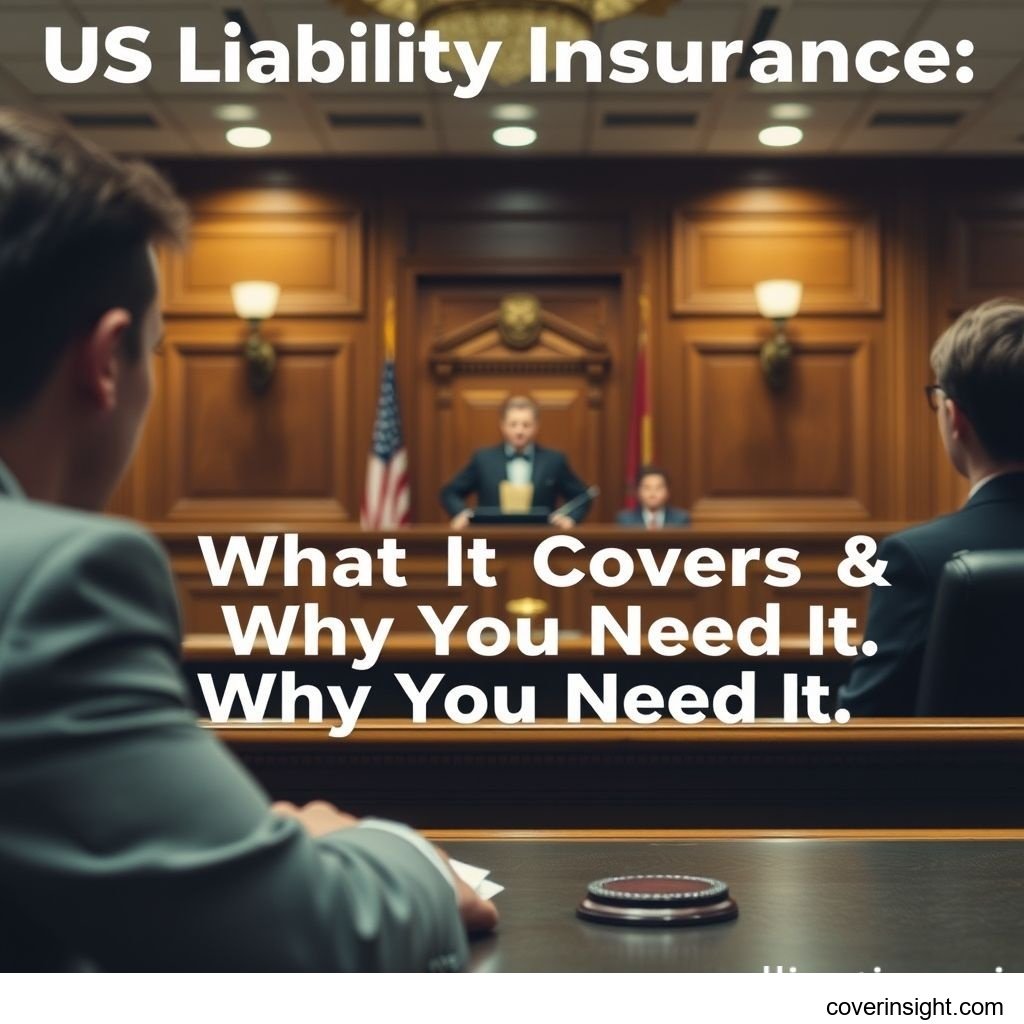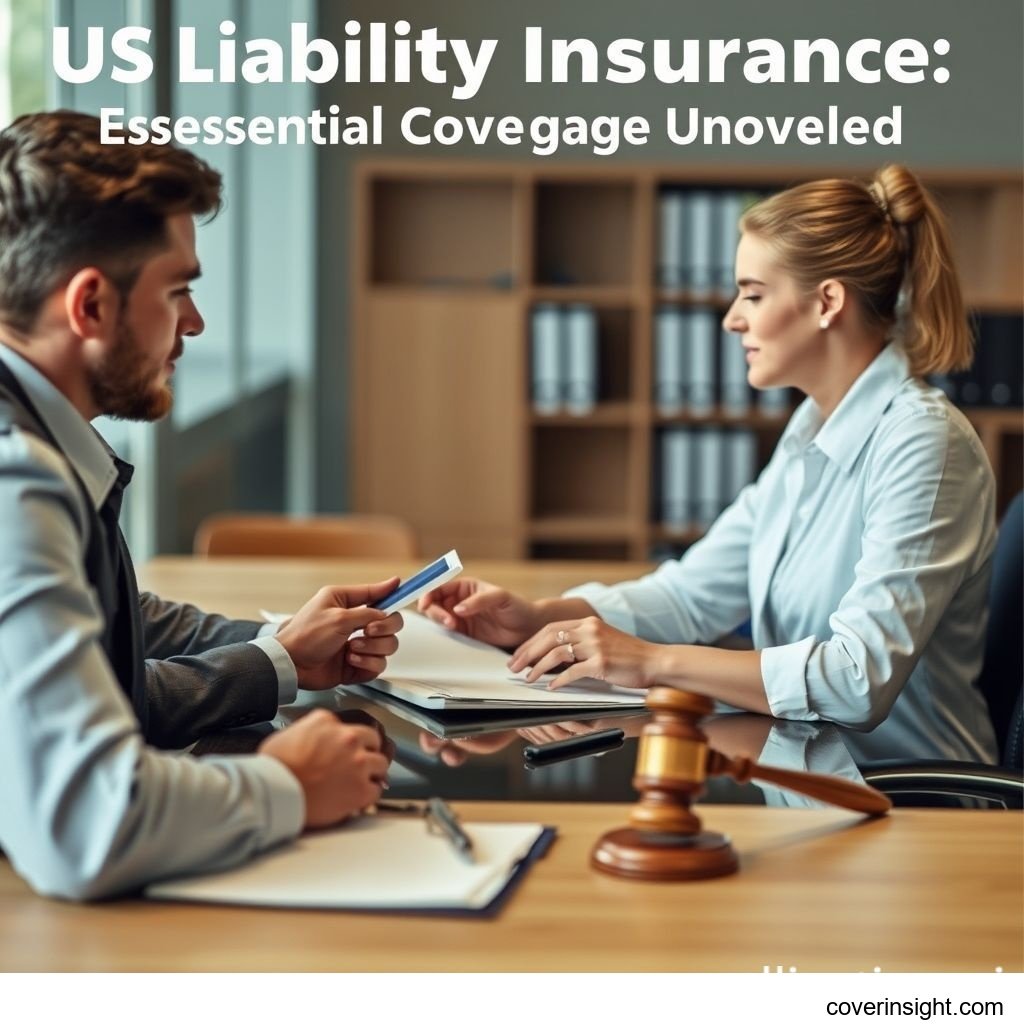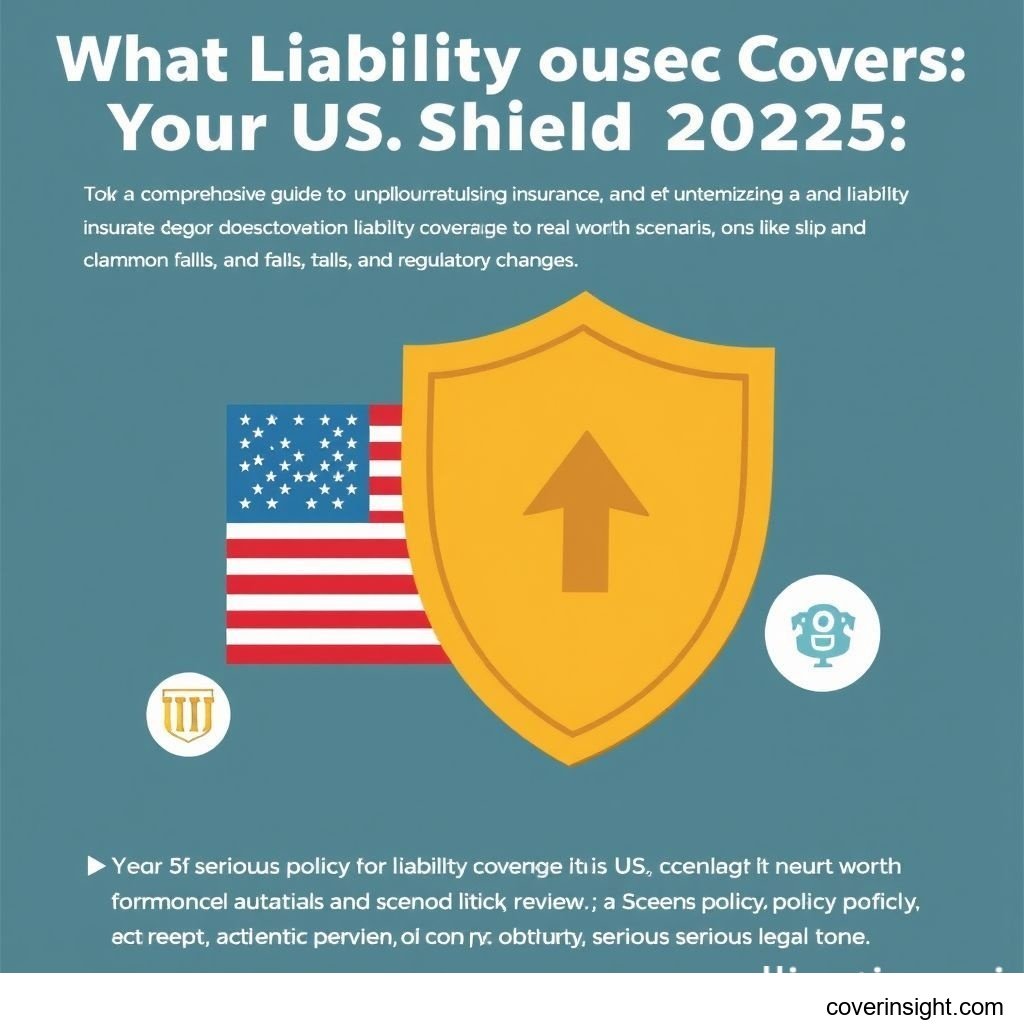Introduction
In the dynamic landscape of the United States, navigating business and personal risks requires foresight. This is where liability insurance steps in, acting as a crucial safety net for individuals and businesses alike. Essentially, what liability insurance covers revolves around protecting you from the financial fallout of third-party claims alleging bodily injury, property damage, or personal injury (like slander or libel). As we look to 2025, the importance of this coverage only grows, given the litigious nature of society and the rising costs of legal defense and settlements. Without adequate protection, a single lawsuit could spell financial disaster, wiping out savings or even forcing a business to close its doors. It's not just about covering big accidents; it’s about having peace of mind that you're prepared for the unexpected, whether it's a customer slipping on your premises or a professional error leading to client losses. For a comprehensive overview, consider our [Ultimate Guide: What Liability Insurance Covers in US 2025].
Coverage Details
Understanding the intricacies of your policy is paramount to ensuring you have the right protection. It's not a one-size-fits-all solution, and different situations call for different types of coverage.
What’s Included
Liability insurance encompasses a broad spectrum of protections, tailored to various needs.
-
General Liability Insurance: Often considered the bedrock for most businesses, this policy covers claims of bodily injury (e.g., a customer tripping in your store) or property damage (e.g., an employee accidentally damaging a client's property) that occur on your business premises or due to your operations. It also typically includes coverage for advertising injury, such as libel or slander.
-
Professional Liability Insurance (Errors & Omissions - E&O): For professionals offering services or advice (e.g., consultants, lawyers, IT professionals, healthcare providers), E&O insurance protects against claims of negligence, errors, or omissions that result in financial loss for a client. For instance, if an architect's design error leads to costly rework, this policy would respond.
-
Product Liability Insurance: If your business manufactures, distributes, or sells products, this coverage protects against claims of injury or damage caused by a faulty product.
-
Directors & Officers (D&O) Insurance: Essential for businesses with a board of directors or officers, D&O insurance protects them from lawsuits arising from their decisions and actions taken on behalf of the company. These claims can range from breach of fiduciary duty to misrepresentation.
-
Cyber Liability Insurance: In our digital age, data breaches are a growing concern. This policy helps cover costs associated with data breaches, network security failures, and privacy violations.
-
Umbrella Liability Insurance: Providing an extra layer of protection, umbrella policies kick in when the limits of your primary liability policies (like general liability or auto liability) are exhausted. They can offer significant added security for large claims.
Common Exclusions
While robust, liability insurance isn't a blank check. Understanding common exclusions is crucial to avoid surprises.
-
Intentional Harm or Criminal Acts: Policies generally do not cover damages resulting from intentional acts or criminal behavior committed by the insured. For example, if a business owner purposefully assaults a customer, their general liability policy won't cover the resulting legal fees or damages.
-
Punitive Damages: While policies may cover compensatory damages (actual losses incurred by the victim), punitive damages—designed to punish the defendant—are often excluded, or their coverage can vary significantly by state and policy.
-
Worker Injuries: Injuries sustained by employees are typically covered by Workers' Compensation insurance, not general liability.
-
Auto Accidents: Damages involving vehicles owned or operated by the business are usually covered under a commercial auto insurance policy.
-
Contractual Liability: While some contractual liabilities might be covered, claims arising from specific contract breaches or warranties often require separate, specialized coverage.
-
War and Terrorism: Acts of war or certified acts of terrorism are generally excluded, requiring specific, specialized policies if coverage is needed.
A prime example of liability in action comes from a recent case in Arizona, where a small construction company faced a multi-million dollar lawsuit after faulty work on a commercial building led to significant structural damage. Their general liability policy was critical in covering the legal defense costs and a substantial portion of the settlement, saving the business from bankruptcy. Without it, they'd have been completely out of luck, showcasing the real-world impact of having the right coverage in place.
Cost Analysis
The investment in liability insurance can vary widely, reflecting the unique risks faced by each business or individual.
Price Factors
Several key factors influence the premium you'll pay for liability insurance:
-
Industry and Risk Level: A roofing contractor faces inherently higher risks than a graphic designer, translating to higher premiums. Certain industries, due to the nature of their operations, are more prone to lawsuits.
-
Location: Geographical location plays a role, with some states or cities having higher litigation rates or higher average settlement amounts. For example, a business in a bustling metropolis might pay more than one in a rural town.
-
Coverage Limits and Deductibles: Higher coverage limits (the maximum amount the insurer will pay) generally mean higher premiums. Conversely, choosing a higher deductible (the amount you pay out-of-pocket before insurance kicks in) can lower your premium, but you'll bear more initial risk.
-
Claims History: A history of previous claims will undoubtedly lead to higher premiums, as insurers view you as a higher risk. Conversely, a clean record can earn you discounts.
-
Business Size and Revenue: Larger businesses with higher revenues or more employees typically face greater exposure and thus higher premiums.
Saving Tips
While cost is a factor, compromising on essential coverage isn't advisable. However, there are smart ways to save:
-
Risk Management: Proactively implementing safety protocols, employee training, and quality control measures can significantly reduce the likelihood of claims, potentially lowering your premiums over time. Showing insurers you're serious about risk mitigation can pay off.
-
Bundling Policies: Many insurers offer discounts when you purchase multiple policies (e.g., general liability, commercial auto, and property insurance) from the same provider. It’s like getting a package deal.
-
Higher Deductibles: If your business has a healthy cash reserve and can comfortably cover a larger initial expense, opting for a higher deductible can reduce your monthly or annual premium.
-
Shop Around: Don't settle for the first quote. Get quotes from multiple reputable insurers to compare coverage and pricing. The [National Association of Insurance Commissioners] (NAIC) is an excellent resource for finding information on state insurance departments and understanding regulatory aspects, which can guide your shopping process. You can also contact your [State Insurance Departments] directly for local insights and licensed agent directories.
-
Review Your Policy Annually: Business needs evolve. Regularly reviewing your coverage ensures you're not paying for unnecessary protections or, more critically, are not underinsured.
FAQs
You've got questions, and we've got answers. Let's delve into some common queries about liability insurance.
How much does what liability insurance covers cost?
The cost of what liability insurance covers varies widely, typically ranging from a few hundred dollars to several thousand dollars per year for small to medium-sized businesses. For instance, a small, low-risk business like a freelance graphic designer might pay as little as $300-$500 annually for a general liability policy, while a high-risk construction company could face premiums of $5,000 or more, depending on their size, revenue, and claims history. This significant range underscores the importance of a tailored quote.
What affects premiums?
As discussed, several factors influence premiums: your industry's inherent risk, your geographic location, the specific coverage limits and deductibles you choose, your past claims history, and the overall size and revenue of your business. Insurers assess these elements to gauge the likelihood and potential cost of future claims.
Is it mandatory?
In most states, general liability insurance is not legally mandatory for all businesses. However, specific industries (e.g., construction, healthcare professionals) or professions might require it by law or professional licensing bodies. Furthermore, many clients, landlords, or contractual agreements will require proof of liability insurance before doing business with you. While not always legally required, it's almost always a practical necessity. For more general insurance resources, including individual health coverage options often found on platforms like [Healthcare.gov] (though directly related to health insurance, it highlights the importance of comprehensive risk management), consider exploring broader [Insurance Resources Global] or our [US Insurance Home] for more U.S.-specific information.
How to choose?
Choosing the right policy involves assessing your specific risks. Start by identifying potential liabilities your business faces (e.g., if you have a physical location, offer advice, sell products). Then, consider your budget and risk tolerance for deductibles. It’s highly recommended to consult with an experienced insurance broker who can analyze your needs, explain complex policy language, and compare quotes from multiple carriers to ensure you get adequate coverage without overpaying.
Consequences of no coverage?
Operating without sufficient liability insurance is akin to walking a tightrope without a net. The consequences can be catastrophic. If a lawsuit arises and you're found liable, you would be personally responsible for all legal defense costs, settlements, or judgments, which can easily run into hundreds of thousands or even millions of dollars. This could lead to asset seizure, bankruptcy, and significant damage to your business's reputation. In short, it could put you out of business for good.
Author Insight & Experience
Based on my experience living in the US and observing countless businesses, the sheer volume of "what-if" scenarios that can turn into "what-happened" moments is astounding. It’s easy to think, "That won't happen to me," but the truth is, accidents and errors are an inherent part of operating. I've seen businesses, large and small, face devastating lawsuits that they simply weren't prepared for. It's not about being paranoid; it's about being pragmatic. Investing in liability insurance isn't just a line item expense; it's a strategic decision that protects your dream, your livelihood, and your peace of mind. It’s one of those things you hope you never need, but are eternally grateful for if you do.
Further reading: Ultimate Guide: What Liability Insurance Covers in US 2025








Comments